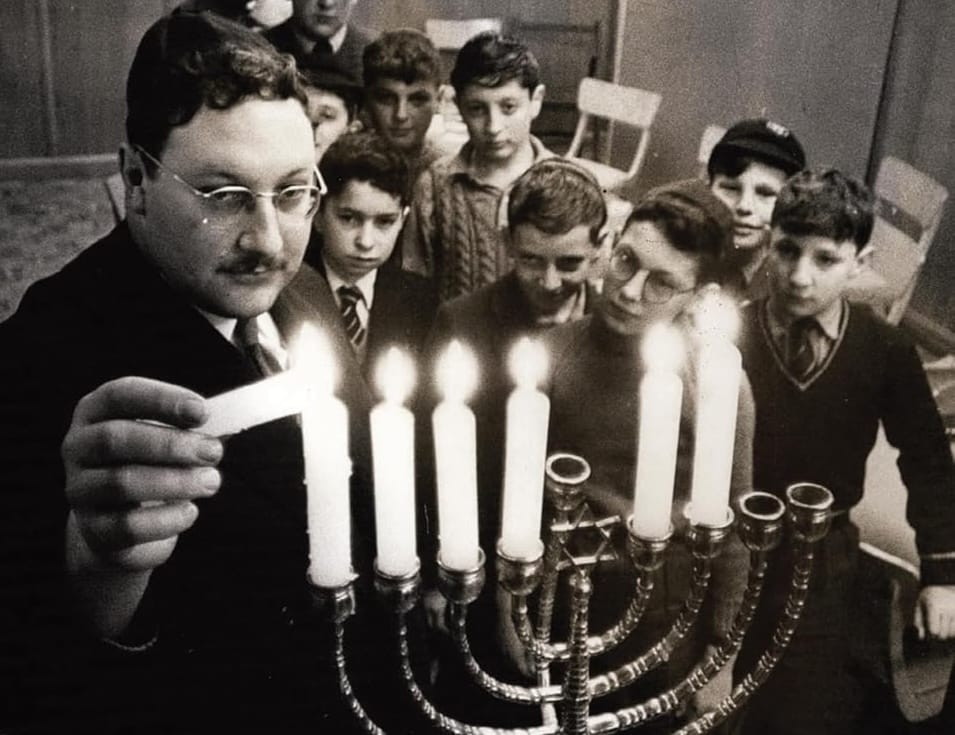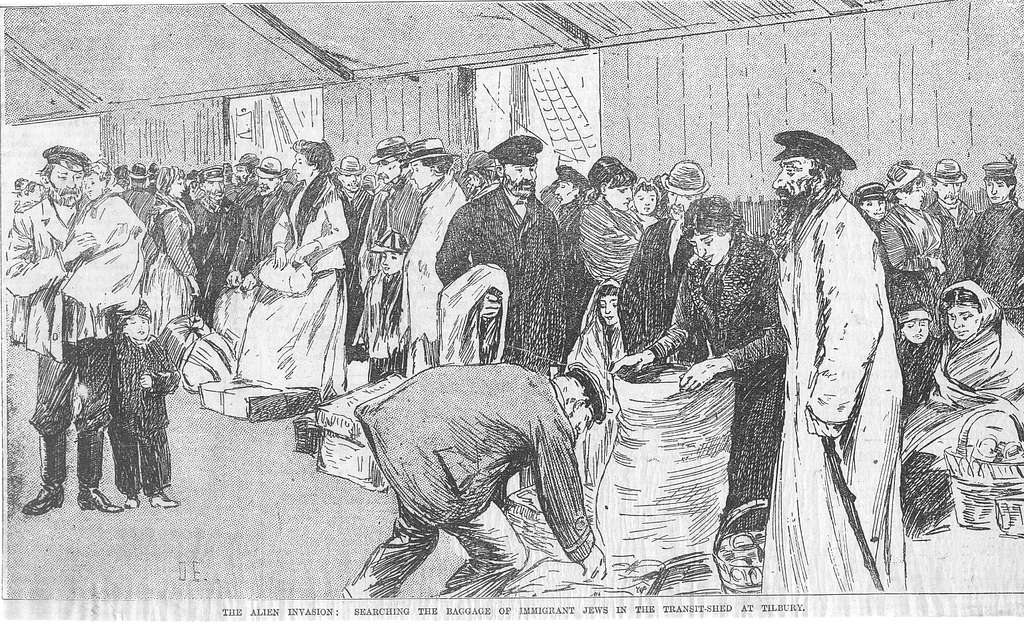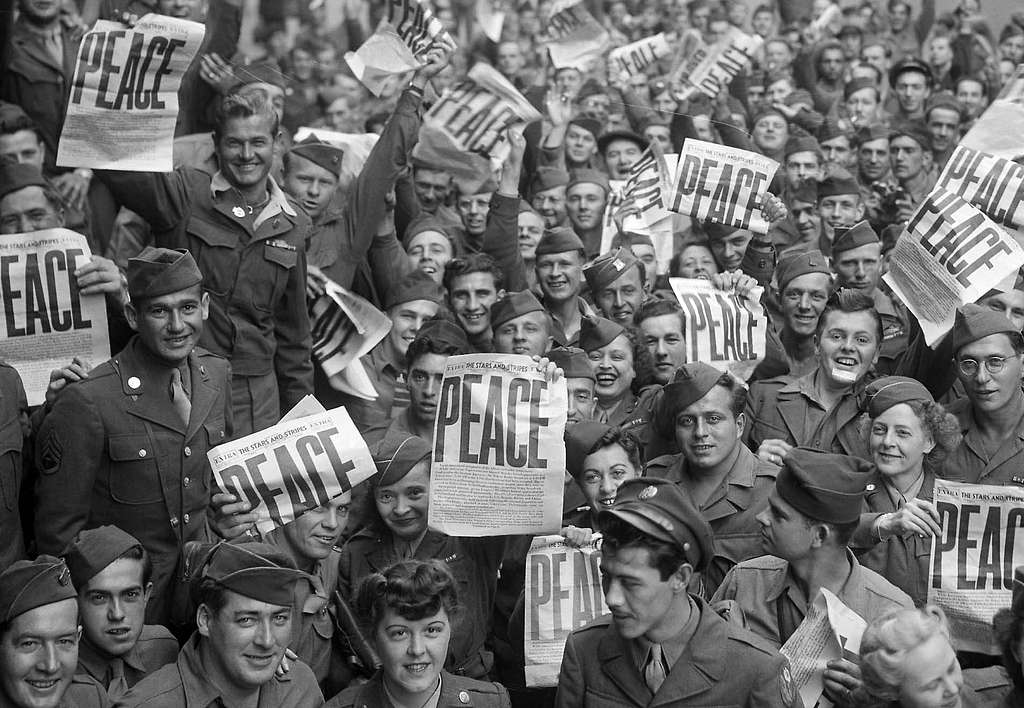On writing British Jewish history
Joseph Finlay reviews An unorthodox history: British Jews since 1945, Gavin Schaffer's new book that tells British Jewish stories from the position of the fringes rather than the mainstream

The publication of a new book on British Jewish history is an exciting event. And a rare one too: there are plenty of Jewish history books in general, with some of those discussing Britain, and a fair few on contemporary British Jewish identity, but hardly any discuss the post-1945 era and do so as history. The assumption is that there’s no real story to tell. Real Jewish history is about antisemitism, the struggle for emancipation and self-determination (only capable of taking place in the land of Israel). Once British Jews gained full legal emancipation in the 19th century, once both Mosely and Hitler had been defeated, once the British Mandate for Palestine became the State of Israel, British Jewish history was pretty much over.
History however, as Francis Fukuyama would eventually discover, has a knack of not ending. According to the tradition of social history, particularly the “history from below” approach developed by British socialist historians in the 1950s, any group with a sense of self and a collective existence has a history worth exploring. Gavin Schaffer’s An unorthodox history: British Jews since 1945 does just that – and is consequently a real mekhaye for historians of modern British Jews. Finally, we have what we’ve lacked; a dedicated volume on the postwar history of the British Jewish community – one we can rely on, bounce off and disagree with where necessary.
Schaffer’s focus is not the “mainstream” Jewish community that we are forever hearing about, but its fringes – a decision which makes the book particularly interesting (and almost tailor-made for readers of Vashti). Each chapter discusses a different group: Jews in small communities; Progressive and ultra-Orthodox communities; activists for Soviet Jews; “Israel-critical” Jews; queer Jews; intermarried Jews; Messianic Jews; and British Jews who made Aliyah.
This is a really original choice – though it still does not manage to include everyone: Yiddish speakers and Yiddishists; converts to Judaism; Middle Eastern, North African and Indian Jews, many of whom immigrated to Britain in the postwar period; Black Jews; Jewish youth movements; Israelis who have migrated to Britain; Jews specifically in Scotland, Wales and Ireland; and Jews in remaining former British colonies such as Gibraltar and the Falkland Islands (where there is, apparently, precisely one Jew who presumably requires two synagogues). The irony of aiming to write a more inclusive history is that it inevitably draws attention to the gaps that remain. The book raises a few other issues worthy of scrutiny, such as its focus on the British national context at the expense of international connections, the absence of a critical perspective towards Schaffer’s subjects and, even as it highlights the variegations among British Jews, a remaining tendency to treat them as constituting a single community. Finally, Schaffer’s inclination to make references to recent events elides the differences between then and now - slotting his book into a broader trend that refuses to let Jewish history be history.
Surveying the Fringes
Chapter one features an enlightening discussion of the “last Jew” discourse, which centres upon towns and cities that were once (usually between the 1880s and the 1970s) home to thriving Jewish communities but have now declined to the point of having a handful or no Jews. Schaffer enjoyably shows that there are in fact plenty of Jews in such places – albeit just the “wrong kind”. Certain mainstream Jewish institutions would prefer to write off a historic synagogue altogether, such as Langside Synagogue in Glasgow, than turn it over to those they deem fringe Jews, or not Jewish at all. It’s great to be reminded that the fear of Jews disappearing through assimilation was the primary Jewish concern for most of the interwar era, not antisemitism or defence of Israel.
Chapter four looks at “Israel-critical” Jews (his term), discussing the traditional anti-Zionism of bodies like the Anglo-Jewish Association, and of the Jewish Fellowship, which emerged in the 1940s – reminding us that such political positions were mainstream in the years before 1948. They found few outlets in the following decades, but Schaffer covers their re-emergence in the 1980s via the neo-Bundism of the Jewish Socialists’ Group, and then later in the form of Jews for Justice for Palestinians (2002) and Independent Jewish Voices (2007). Schaffer shows that Jewish unity around Israel was a short-lived phenomenon and that these radical groups offered space to be proudly Jewish outside the Zionist tent.
Chapter five opens with the 1992 “Walkabout” debacle, in which new Chief Rabbi Jonathan Sacks held a cross-communal walk in Hyde Park and then (unsuccessfully) attempted to ban the Jewish Lesbian and Gay helpline from taking part – a late example of the rampant homophobia which bedevilled British Jewish life in the 1980s. Gay Jews began to organise in Britain in 1971, becoming the Jewish Gay Group and later, the Jewish Gay and Lesbian Group, the first such organisation in Europe. Schaffer traces the hostility these organising efforts faced from Orthodox rabbis (and some Reform ones), particularly Chief Rabbi Immanuel Jakobovits, and how attitudes began to change in the 1990s and 2000s.
Chapter six discusses changing attitudes to intermarriage, noting that the postwar trope of sitting shiva for a child who married a non-Jew has now almost entirely disappeared. Schaffer covers “Jet”, a 1988 Orthodox programme designed to limit intermarriage by arousing “a sense of Jewish awareness and belonging…in the Jet age”, referring to the age of the jumbo jet aeroplane, a descriptor of the era before the internet was popularised. More positively, Schaffer notes the “I’m Jewish My Partner Isn’t” seminar programme, initiated by Rabbi Jonathan Romain the same year, in which 250 took part, signalling a new desire, at least in the Progressive world, to try and cater to Jews in mixed-faith relationships. Chapter seven is the most controversial, focusing on Jews for Jesus and Messianic Judaism. In 1991, Richard Harvey, brought up as a Liberal Jew in south London, became the first UK director of Jews for Jesus, and Schaffer refers to an advert in the Times which emphasised Harvey’s love of borscht, gefilte fish and kaluki, whilst also describing him as a “follower of Y’shua”.
This message resonated with some British Jews – like the 1960s pop singer Helen Shapiro – whose Jewishness had long been cultural and uncommitted to Jewish theological dogmas. Schaffer then recounts a prominent response to this trend, Operation Judaism, an Orthodox counter-missionary initiative, and in my favourite anecdote in the book, reports the occasion in 1989 when Stanmore United informed its young members that it had invited a Jews for Jesus representative to address them. When they showed up, they found themselves subjected instead to an anti-missionary lecture by an Orthodox Jew who had formerly been Messianic, a tactic apparently modelled on Israeli organisers who would advertise a “Palestinian” speaker who turned out to be a hasbarist.
Finally, chapter eight covers British Aliyah, including training on hachsharah farms in the British countryside (where intellectual and sexual liberation was a big part of the appeal) and Kibbutz Kfar Hanassi, established by British Habonim members in the Galilee, where English remained the lingua franca rather than Hebrew. One interviewee notes that the Kibbutz was “the last outpost of the British Empire”, which might have served as a basis for an exploration of political continuity between the British Mandate and the State of Israel, but Schaffer does not take this opportunity, treating this chapter as part of the history of British Jews rather than the history of Israel/Palestine.
Keeping it National
This tendency is found throughout the book, which is almost exclusively national in its focus, keen to emphasise developments that were specifically British Jewish, rather than those that occurred due to the influence of the USA or Israel. I understand, and share this tendency, but Schaffer inevitably ends up underplaying the international component of twentieth-century Jewish life, in which Jews were constantly aware of, and imitated, the activities of their fellow Jews in other countries.
An Unorthodox History unapologetically centres Jews, or those who self-define as such, but I yearned for more instances where Jews and non-Jews lived intertwined lives, such as non-Jews (does anyone self-define as a non-Jew?) who attended synagogues; synagogue caretakers, who are invariably gentile in order to fulfil the shabbes goy function and turn on lights during the Sabbath; non-Jews active in anti-antisemitism work (there are a lot of these); and non-Jewish scholars who research Jews and Judaism in the academy. There is one striking illustration of this phenomenon in the introduction, where Schaffer retells a piece of his own family history. We learn how his grandfather Sid, who lived in Edgware, owned a shop in Balham. One night in 1961 a fire broke out, decimating the shop and spreading to the flat above it, causing the deaths of three non-Jewish tenants. And yet, this terrible event was not often recounted as part of the family history, Schaffer recalls – the family preferred to remember the resilience of Sid as he rebuilt his business. This is then an illustrative case of Jewish-non-Jewish interaction which is not about anti- or philosemitism, or Jewish victimhood at all. “When we historicise ourselves as Jews, what becomes of our neighbours?” asks Schaffer. “Are they drawn in only as persecutors, or in bit parts? Do they get left out entirely, even when the real story is about them?”
Schaffer covers a diverse array of Jews with opposing views. Where does he stand in these arguments? We don’t often find out; unlike most Jewish historians, he strives for neutrality, but he does view all Jews he discusses as being part of one community. Arguably, in most of the postwar period this was the case. Benedict Anderson taught us that nations are created through media, rather than the other way around, and if anything maintained a sense of communal unity, it was the Jewish Chronicle, a newspaper that everyone read (while, anecdotally at least, often not buying it themselves), argued with, wished to appear in and sought to influence. Since then, the JC has descended into a sea of Kahanist shund with ever-decreasing sales, and there is far more media competition in the form of The Jewish News, The Jewish Week, and Vashti, plus an array of blogs, podcasts and social media pages where everyone is their own publisher. There is no longer a single Jewish media source, making the idea of a single Jewish community in Britain increasingly difficult to maintain.
Let Historians Be Historians
Though it does reference earlier and later events, Schaffer’s history is rooted in the period from the 1960s to the early 1990s. This is a strength: there is so much to discuss in this period, and so little scholarship about it. What concerns me more is the contemporary allusions Schaffer sometimes feels compelled to make at the end of chapters, providing a veneer of contemporary relevance to archival research pertaining to at least 30 years ago.
On the question of antisemitism, for example – a subject which Schaffer raises, but is keen not to centre – he notes that “Jews did not (and do not) need to seek out threat or terrors; they were (and are) real enough.” Schaffer is arguing that the fears experienced by many Jews today were prefigured by concerns about antisemitism in the postwar decades, and that there is a connection between anti-antisemitism campaigning now and campaigns for Israel and Soviet Jews in the 1960s and 1970s.
I think something different is happening. I see contemporary Jewish anti-antisemitism and political campaigning as the result of confidence rather than fear – a confidence that began developing in the late 1990s. By this point Jews were increasingly welcome as Jews in multicultural Britain, and felt strong enough to make demands: some fair, some unreasonable.
To think that our current discourse around antisemitism is primarily reactive, and largely in response to the election of Jeremy Corbyn as Labour leader in 2015, as Schaffer said in a launch event for the book, is misguided; it was alive prior to that. The right-wing journalist Richard Littlejohn made the film The War on Britain’s Jews in 2007 and the assertive campaign to stop Ken Livingstone returning as Mayor of London took place in 2012. Howard Jacobson published his antisemitism-obsessed novel The Finkler Question in 2010, and his dystopian fantasy J, depicting a future genocide of British Jews, in 2014. It was during the Labour leadership of Ed Miliband, from 2010 onwards, judged by some communal leaders and philanthropists to be insufficiently sympathetic to Jewish communal concerns, that the real moral panic over antisemitism began, with a groundswell of coverage in 2014. While postwar Jewish activism was largely on behalf of Jews abroad – for Israel; for Soviet Jews; for Jews in countries like Yemen and Ethiopia that needed rescuing – in the 2000s and 2010s, British Jews became activists on behalf of themselves.
There is no obligation for Schaffer to get into any of these post-millennial developments. It would be totally reasonable to formally end his book with 1997, or 2000. Perhaps we need to clarify that the notion of “postwar” has an endpoint – that the themes and priorities of the 1960s, 1970s and 1980s changed at a certain point in the 1990s – with the end of the cold war and the Oslo peace process. And that they changed further in the post 2001 era — after 9/11, and after the breakdown of the peace process in Israel/Palestine. New trends began to occur which cannot easily be collapsed into “since 1945”.
This is in part a plea for historians, particularly modern historians, to be allowed to do history, and not to feel compelled to collapse the differences between their period (however recent) and the present. Writing history with a clear endpoint would combat this tendency; allowing the reader to form their own judgments on what echoes or ruptures exist between that period and the present. A single book of modern Jewish history as history is worth ten books of shallow contemporary commentary, and ironically, offers better tools to think about the present moment. Schaffer is reluctant to make value judgements about British Jewish life, but those who are more openly critical require history in order to appreciate how things could be otherwise; to appreciate that another British Jewish community is possible. ▼
Joseph Finlay is a historian of British Jews and race relations. He writes regularly on Jewish issues in his newsletter, Torat Albion.
Author

Joseph Finlay is the former Deputy Editor of the Jewish Quarterly and a PhD student at Southampton University. He is Musical Director of Mosaic Liberal Synagogue and the London Jewish Male Choir.
Sign up for The Pickle and New, From Vashti.
Stay up to date with Vashti.



